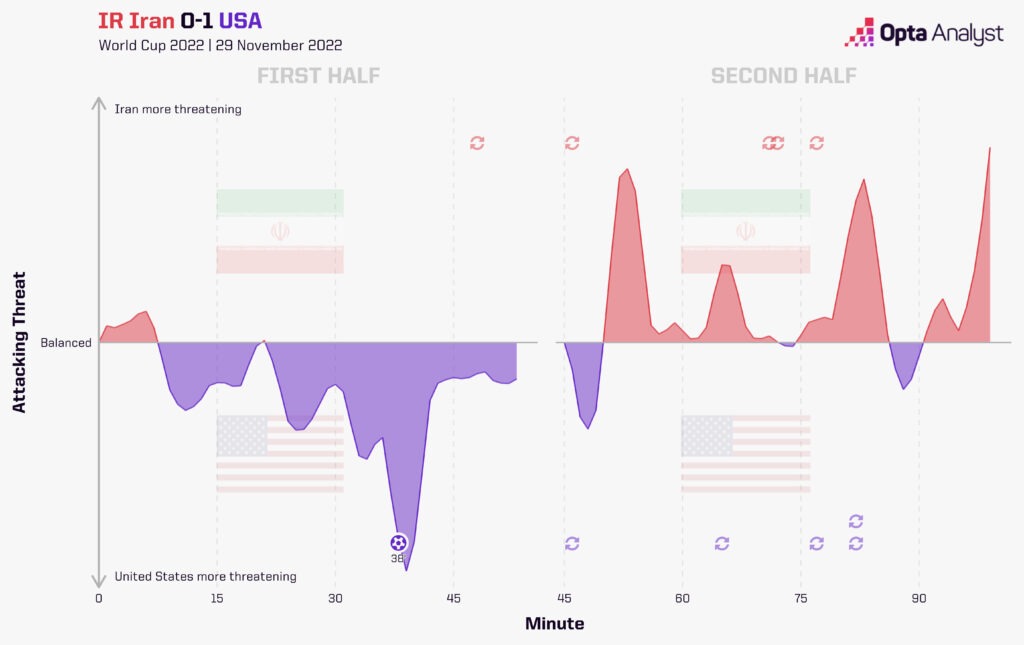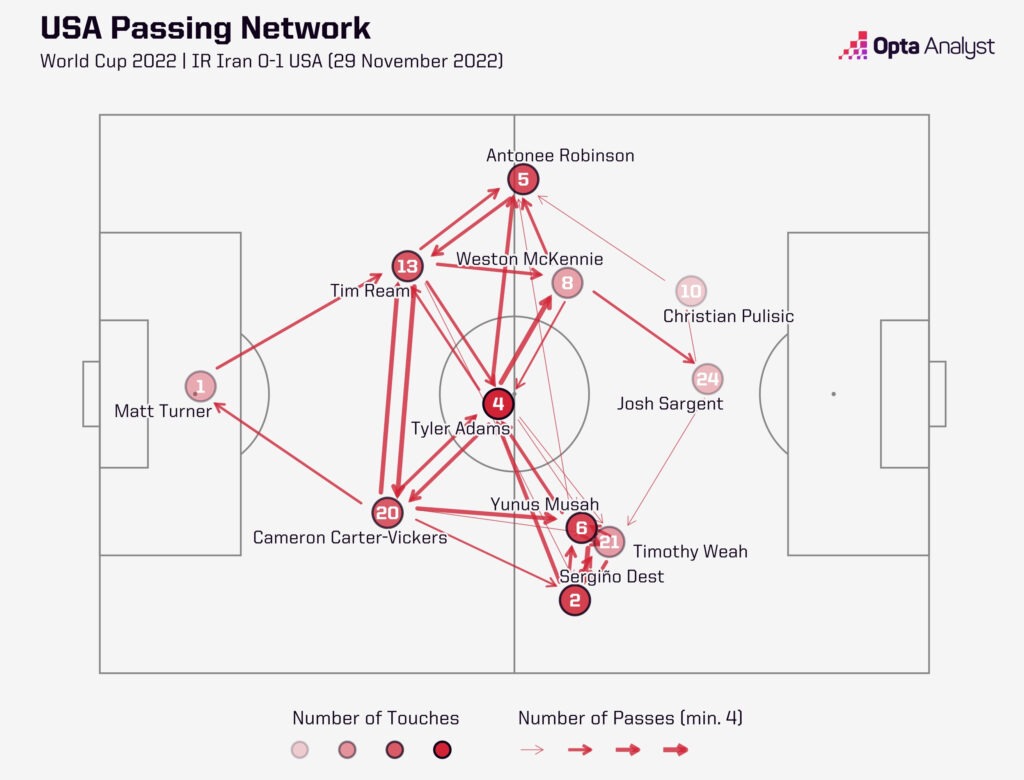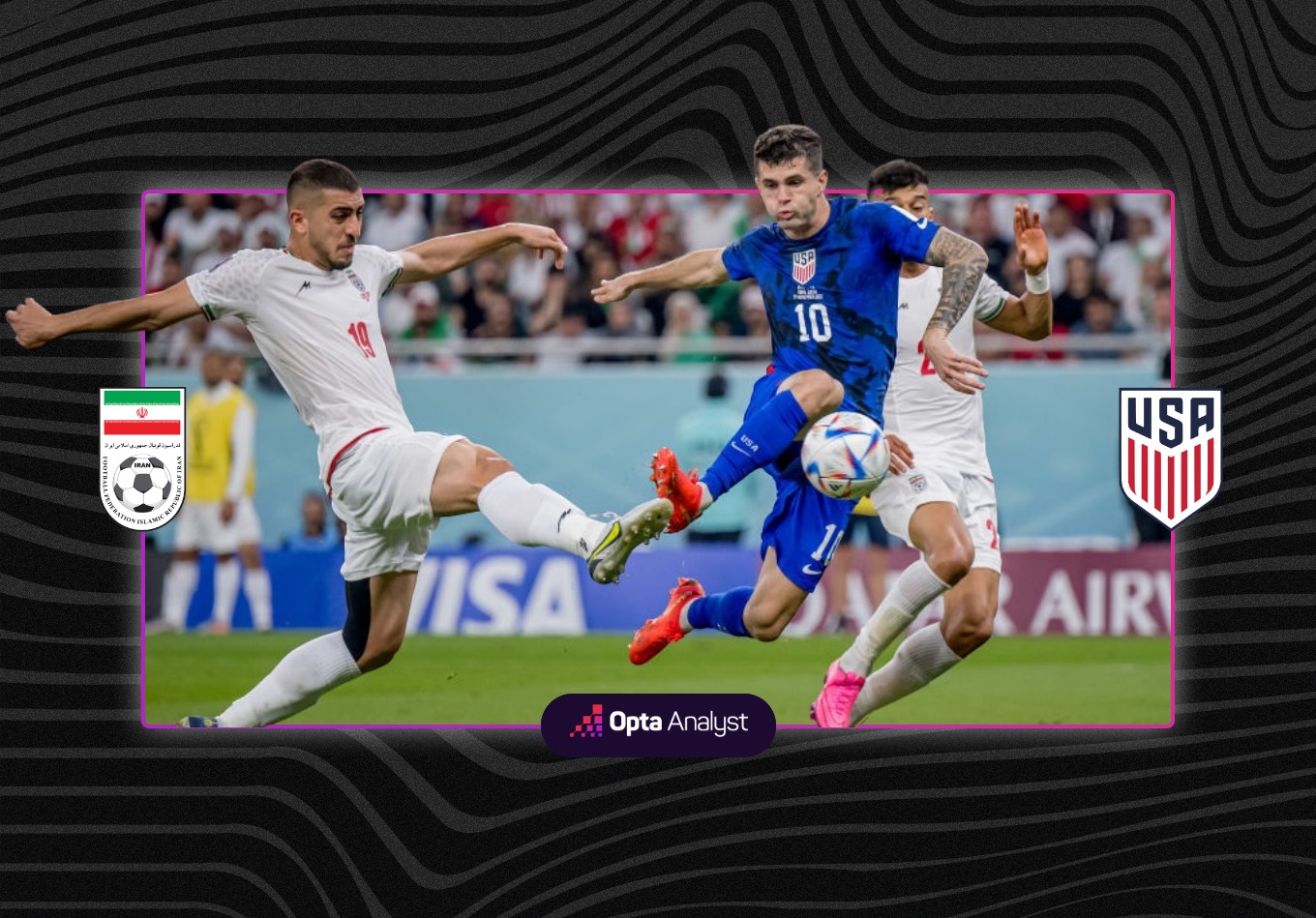The last time the United States needed a win to progress from the World Cup group stage, Landon Donovan left it until late against Algeria in 2010 with perhaps the most dramatic goal in their World Cup history. It was a 38th-minute strike this time around, which was welcome to those whose blood pressure prefers to hold a lead rather than chase one.
With it, the U.S. are onto their third straight round of 16 at World Cups for which they’ve qualified, and Group A winners the Netherlands are waiting for the teams’ first World Cup meeting.

Coach Gregg Berhalter went back to the formation the U.S. used against Wales with a 4-3-3 and Josh Sargent up top, and frankly, that hasn’t mattered with the No. 9 position continuing to be ineffective from a goalscoring perspective. Regardless of formation, the U.S. midfield trio of Tyler Adams, Weston McKennie and Yunus Musah – and regardless of which sides McKennie and Musah are on – have been good enough to keep this thing going for another match.
Birthday boy Musah and Timothy Weah were perhaps the most active U.S. players in the first 30 minutes with the attack coming most frequently up the right side (40.9% with 23.2 up the middle and 35.9 on the left). In the 28th minute, Weah had his fourth touch in the Iran box and elected to go with a header with the ball coming down to him when letting it drop for a volley would have given him a better chance. But the attack kept coming.
And when their attack is coming up the right, it’s inevitable that it’ll also involve Sergiño Dest, who had the most touches in that period and completed his first 26 passes, including 10 in the attacking third. The most important of those was No. 26 itself after McKennie – playing on the left side of the midfield three against Iran – pinged a ball into the box to the right back, who headed a one-time pass to Christian Pulisic for the finish inside the six-yard box in the 38th minute.
Weah even thought he had a second in first-half stoppage time, but it was disallowed for offside.
The half ended with the U.S. managing 16 touches in the opposition box, which is their second-highest first-half total in a World Cup match on record. They also managed three shots on target after totalling two in their first two matches. But it could have been better if they’d been able to get on the end of more than just one of their 15 open-play crosses in those opening 45 minutes.

They emerged from the tunnel without Pulisic, who was injured on a collision during his goal but made it through the remainder of the first half. And as they have throughout the tournament, they emerged from the tunnel a side that had either been instructed to endure pressure or a side that wasn’t able to sustain their level of play from the first half. Brenden Aaronson came on for Pulisic and was joined by Kellyn Acosta at 65 minutes for McKennie after the suffering had started to settle in for the U.S. against an opponent that had made a name for themselves by breaking hearts late on.
Five of Iran’s last six goals at the World Cup have been scored in 90th-minute stoppage time, including three of four at this year’s tournament. Another would send them through. Narrative, narrative, narrative.
When 75 minutes hit, Iran still hadn’t put a shot on target. Ninety minutes came and went – but a 90 with the nine minutes of stoppage time this tournament has come to expect. The Iran chance came on a set piece in the 93rd, but a Morteza Pouraliganji header went wide, and a late review for a penalty wasn’t given.
If the round of 16 is as far as it goes for the United States, people will remember Pulisic’s goal and the injury that came from it, and they’ll remember the frantic defensive effort that followed as the second half wore on, but the U.S. are advancing to the last 16 because they have a midfield that’s controlled play when they’ve needed a goal and avoided exposing the centre backs behind them. Their passing accuracy ending in the final third (75.1%) is fifth highest at the tournament behind Spain, Portugal, France and Brazil. As a result, they’ve now gone through group play without conceding an open-play goal and have recorded consecutive clean sheets at the World Cup for the first time in 92 years.

They lean on Adams, who unsurprisingly led the team in touches again (84), won possession more than anyone on the pitch (12), and lost possession (eight) fewer times than anyone to play 90 minutes other than Tim Ream (six). Granted the U.S. have played a match more than 24 teams still, but Adams leads the tournament in tackles won (nine) and is second in ball recoveries (26).
So the terrible pre-World Cup form is forgotten. The five-match winless streak is over, and it’s onto the round of 16, but in reality that’s not foreign territory for the U.S. even if eight years away has made it felt so. Adding a knockout-stage win over a perennial European contender? That certainly is, but that may require a commitment to the style they’ve played to start matches and trusting it can be effective beyond 45-60 minutes whether they have a lead or not. Getting an early goal and settling for absorbing pressure didn’t work against Wales, yet Berhalter indicated against Iran he had no interest in seeing if his side could keep the ball and win the match on anything resembling the front foot. It worked this time – barely. Taking the same approach against a Dutch side that hasn’t impressed would be an injustice to a reasonably talented team that has started to win us over.
